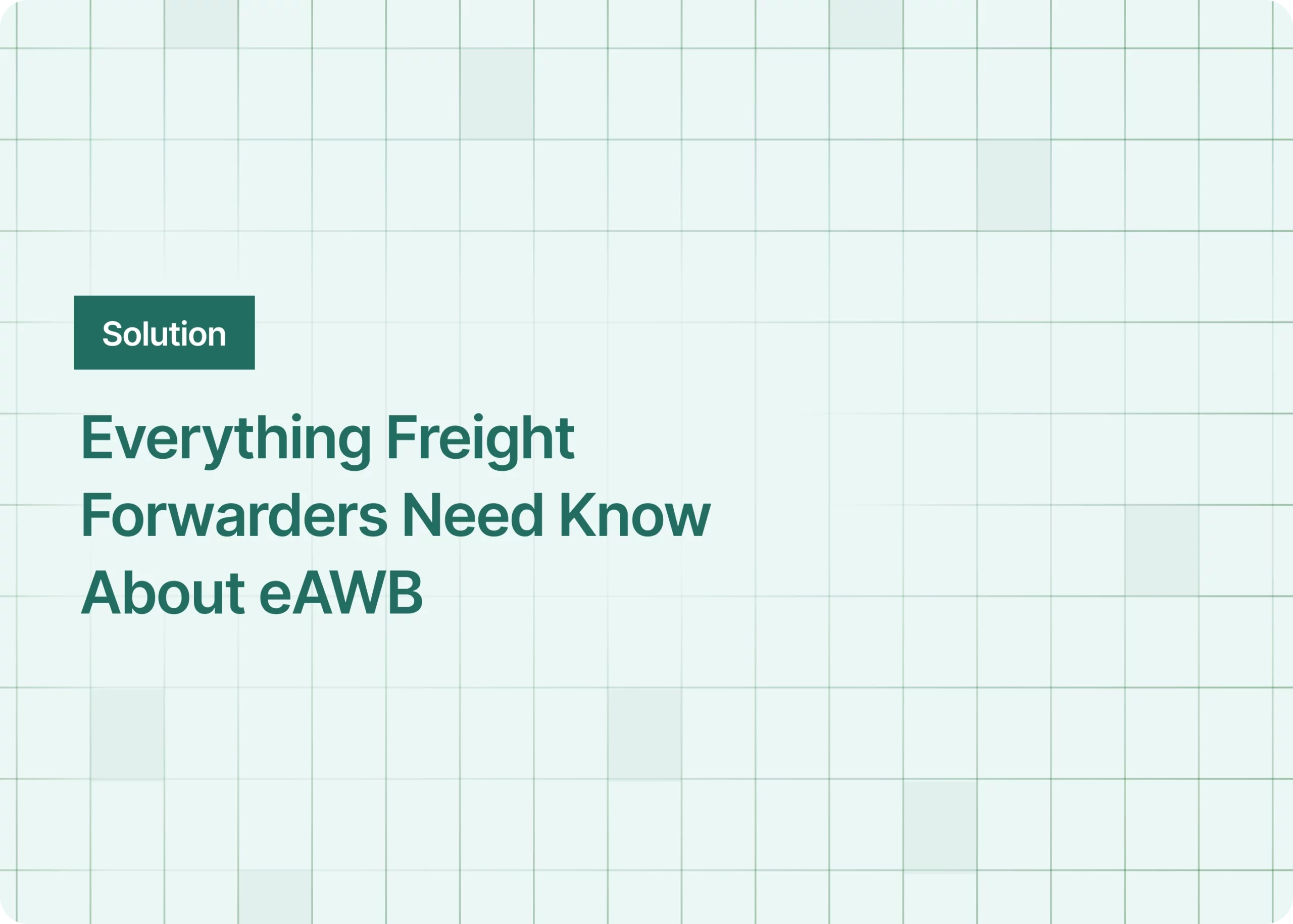Since January 2019, when eAWB became the default contract of carriage for all air cargo shipments on approved trade channels, market penetration has been rapidly expanding. According to the latest data from the International Air Transport Association (IATA), eAWB penetration has reached 72.0 percent since its introduction in 2010.
Freight forwarders are adopting eAWB not only because it has become the de facto standard, but also because of the benefits it offers: increased productivity, reduced costs, improved customer service, and many more.
What is eAWB?
Using an airline to transport goods abroad requires up to 30 documents, which means a lot of paper to send and keep meticulous track of. Any disruptions in the process could result in significant delays. eAWB, which stands for electronic air waybill, is the solution to this problem. It is a data exchange mode introduced by IATA that is used in air transport. All versions of paper AWB between a shipper (freight forwarder) and a carrier are replaced by eAWB. If you want a more in-depth understanding of AWB, you can read our other blog post on the subject.
What are the benefits of eAWB for freight forwarders?
Increase Productivity
- Remove the need to manually check data between the system and paper AWBs.
- Helps prevent data entry errors
- Eliminate the need for document filing and collation, as well as the risk of document loss.
- Access data in real-time and move shipments as scheduled
Reduce Costs
- Reduce the cost of document processing
- Remove the need for document delivery from the freight forwarder to the airline.
- Eliminate the need for document delivery from the warehouse to the flight.
- Reduce storage expenses while freeing up office space
Improve Customer Service
- Provide you with a better and more efficient service by simplifying their paper handling work and requirements
- Proactively notify you of document issues so that they can adjust quickly and ensure cargo is loaded on time
- Improved visibility for you and stakeholders, thanks to the cargo track & trace solution
- Eliminate the need to manage discrepancies caused by missing documents
- Accelerate the process for you by giving you direct access to the warehouse to unload your customer’s cargo.
Speed
- You can cut the total cycle time by up to 24 hours
- Ability To receive and deliver relevant shipment information in advance of the cargo
Quality & Reliability
- Improve data quality in the following areas: correctness, integrity, validity, consistency, and completeness.
- Instant access to electronic records that are easier to preserve and recover, avoiding delays caused by missing information
- Customer data can be used more efficiently throughout the entire process
- Shipments are less likely to be delayed when electronic documents are auto-populated
How to implement eAWB
Step 1 – Join the Multilateral eAWB Agreement
The Multilateral eAWB Agreement (MeA) establishes the legal foundation for parties to enter into cargo contracts electronically. As a result, freight forwarders will have a one-stop shop arrangement that will allow them to tender eAWB cargo to multiple airlines in a variety of airports throughout the world.
It is completely free to join. Take the following steps:
- Fill out and submit the Online Joining Form (approx. 10-15 minutes)
- Receive your e-signature agreement
- Examine and e-sign the agreement.
Step 2 – Ensure your technology supports eAWB
The primary role of eAWB is to exchange cargo status messages between a freight forwarder and an airline. To implement eAWB communications, freight forwarders, airlines, and ground handlers require diverse technical capabilities. The software used by a freight forwarder must execute at least the following critical eAWB functions:
- Send air waybill messages
- Obtain flight status update notifications
- Archive digital messages
- Print-on-demand AWB
You must use the Cargo-XML or Cargo-IMP formats to carry out these operations.
Step 3 – Check the quality of the electronic messages
Check the data quality before beginning an eAWB exchange with the carrier. Because electronic messages delivered in eAWB format are actual documents, any issues must be resolved before the message is sent. The following are the most often encountered problems:
- Invalid information
- Syntax mistake in the message
- The cargo system is not correctly configured (integration, layout)
- Delays in transmission
Message quality assurance is critical both during the planning stage and after eAWB implementation.
Step 4 – Activate the agreement with your airline partner
If you lack the engineering resources to create your own eAWB system using the Cargo-XML platform, you can use pre-existing ones.
Once the procedures have been confirmed, an airline will prepare an Activation Notice, which is a document that allows eAWB processes to take place between the parties. The airports, locations, and effective dates of shipments are listed in this document. The parties can begin exchanging e-AWBs as soon as a freight forwarder signs the Activation Notice.
eAWB solutions and platforms
The primary purpose of eAWB systems is to allow users to send data to airlines, retrieve messages, print them (if necessary), and update and track container status information. These solutions are web-based and easy to use. Some software solutions allow you to communicate shipment information to customers straight from the system. These solutions are available as stand-alone cloud-based applications, or as modules inside a freight forwarding software.
The rate of digitalization in the freight forwarding industry will only accelerate. The eAWB is not the only document needed in the shipping procedure; ISF and AMS are also required. Because digital document adoption is unavoidable, you may need to consider new system solutions for your company. Instead of paying for various systems to handle different types of documents, an all-in-one freight forwarding software like GoFreight can be used.
Feel free to contact GoFreight experts to learn more about how GoFreight can meet all your digitalization needs.








